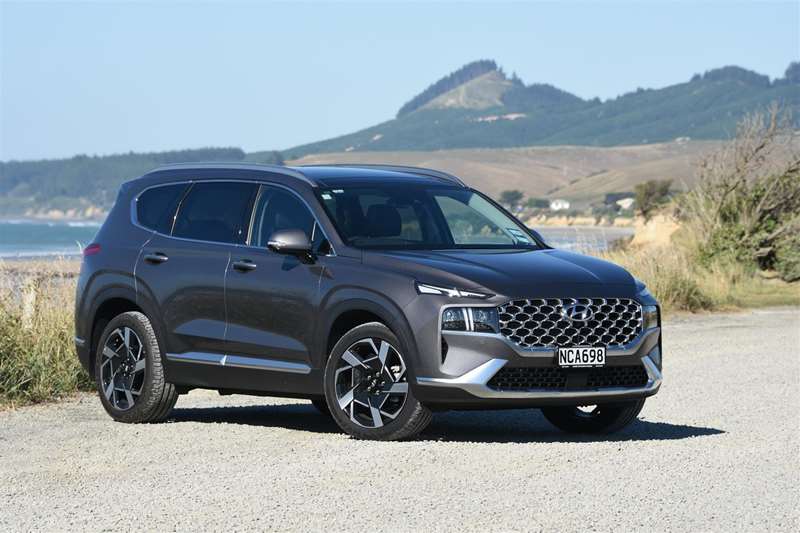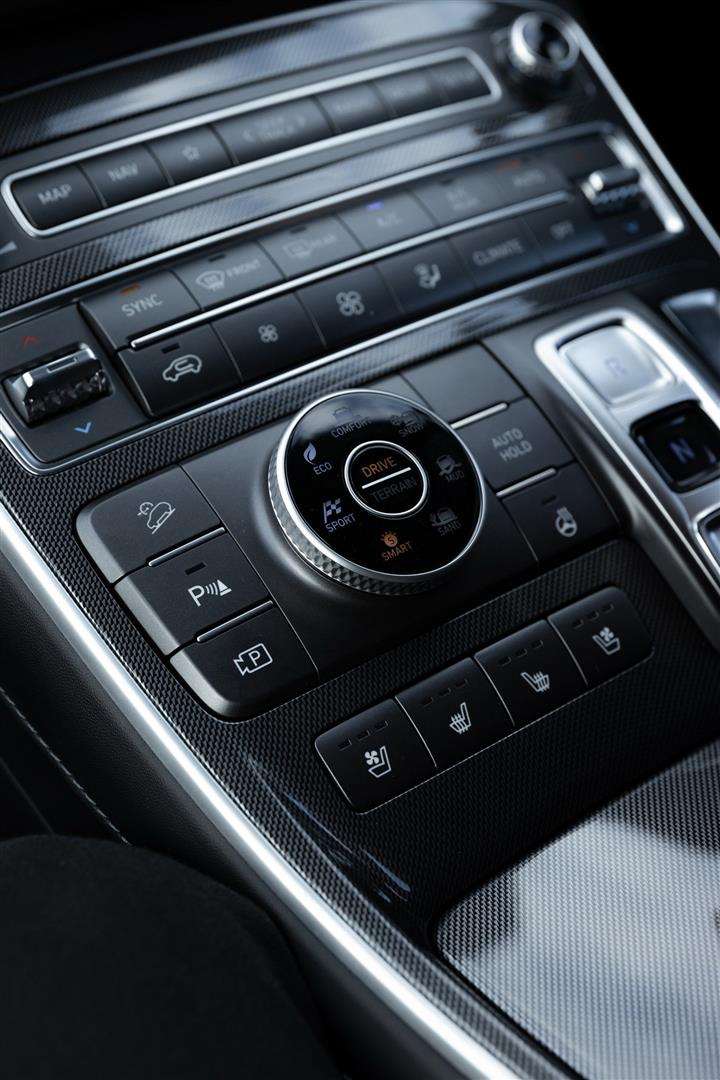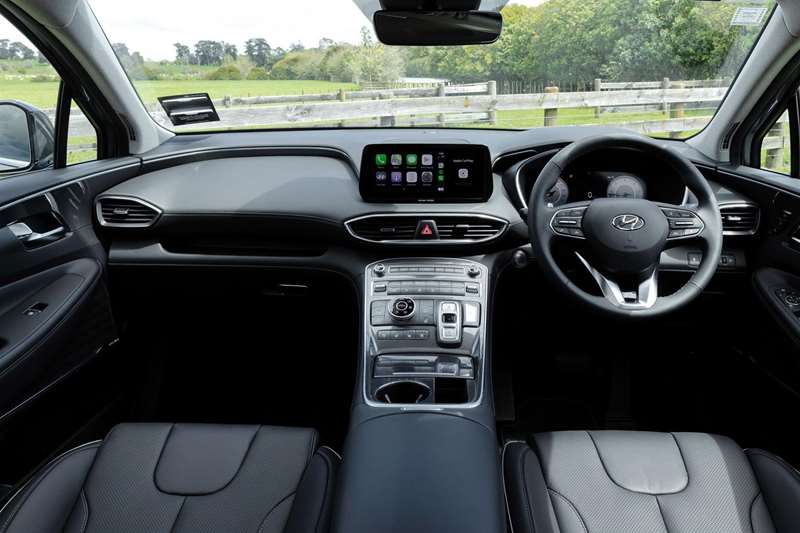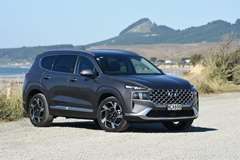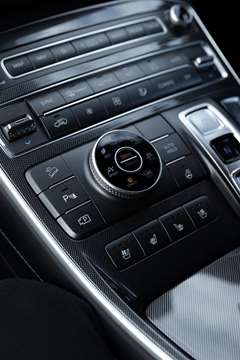Significant changes have been made to the current Hyundai Santa Fe. David Thomson drives the flagship model to see what’s new.
What’s new?
Just a couple of years after the launch of the fourth-generation model, the Santa Fe has been repackaged on an entirely new underlying platform. It features design changes inside and out, a roomier cabin, new safety features, improvements in refinement, bigger brakes, engine upgrades and a new eight-speed dual-clutch automatic transmission.
Sharing its platform and other core features with the Kia Sorento that featured on these pages a few weeks back, the updated Santa Fe is currently offered here as a seven-model range, featuring one turbo-diesel and two petrol engines and three specification levels: Standard, Elite and Limited. Hybrid options are scheduled to join the line-up mid-year.
Hyundai New Zealand supplied the $89,990 CRDi Limited for appraisal.
What’s it like to look at?
The Santa Fe’s status as the largest vehicle in Hyundai’s passenger car line was usurped earlier this year when the Palisade was launched here.
Even so, the Santa Fe is a substantial machine. The new model is 15mm longer and gains 10mm in width and 5mm in height.
Broader wheel arches account for the extra width. These are needed to accommodate the 20-inch alloys and 225/45 R20 tyres that are fitted to the Elite and Limited models.
Styling changes introduced with this upgrade are evident front and rear.
Upfront, the already distinctive Santa Fe nose gets a chunkier look, with squared-off LED main lights bisected by T-shaped running lights. The light clusters are integrated into an even wider version of the vehicle’s cascading grille, with a particularly prominent chrome finish provided on the Elite and Limited.
There’s a fresh taillight treatment too — LED light strips now run across the width of the rear bumper, and there is a reflective strip between the main taillights.
What’s it like inside?
The Limited’s cabin is bright, spacious, and finished to a very high standard.
Upfront, the key change is an all-new and radically different centre console for the Elite and Limited models.
The new console has a ‘‘bridge-style’’ design that includes a large storage space underneath, and it is home for no fewer than 36 buttons and knobs, controlling everything from the front seat heaters and chillers to the gearbox. In addition, there are 12 more buttons on the steering wheel, and another 17 to the right of the driver.
To be fair, this veritable button-fest is not as intimidating as it sounds, and buttons for related functions are generally grouped together in a sensible and reasonably intuitive fashion. The only item that had me temporarily flummoxed on test was the location of the electronic park brake, which is tucked away to the right of the steering wheel.
Other key elements of the cabin design include the dash, the broad, comfortable front seats, and the excellent cabin storage options, all carried over from the pre-facelift Santa Fe.
The Limited came with all the trimmings, including multi-textured leather upholstery and a wide array of soft-touch surfaces. The main trim accents comprise mock carbon-fibre inserts in the door and centre console, contrast stitching, and some brush metal surrounds.
The Limited’s full-length panorama sunroof brings plenty of light into the cabin, especially in the front and middle of the three seating rows.
As before, the boot space when the rear seating row is raised is a tightish 130 litres, and those two rear seats (which are provisioned with a USB plug point and separate air-conditioning) are better suited to children than adults.
When the rear seats are folded into the boot floor, carrying capacity rockets to 571 litres, a 24-litre gain over the previous generation Santa Fe. This feature, along with a useful boost in the vehicle’s already decent middle-row legroom and excellent headroom, are the two major space gains delivered by the switch to the new underlying platform.
Adjusting for back angle and legroom, the middle seats feature a fold-down centre armrest with integrated cupholders, there are also two USB charge points, and the tinted rear windows come with pull-up blinds.
What comes as standard?
Key comfort and convenience features from entry level include heated mirrors, LED lights, smart key entry, dual-zone climate control, Bluetooth connectivity, smartphone mirroring and five USB ports. The Elite adds Bi-LED headlights, leather trim, front and middle-row seat heaters, front power seats, paddle shifts, a larger centre touchscreen, satellite navigation, rain-sensing wipers, a premium Harman Kardon sound system and wireless phone charging.
Only the Limited takes the panorama roof, ventilated front seats, a head-up display, a fully-digital main instrument cluster, smart tailgate and LED interior mood lighting.
The Limited also picks up remote parking via the key fob, as well as a surround view camera, parking collision avoidance and a clever blind spot view monitor system that projects a camera image to the rear from the appropriate side into the main instrument cluster when the indicator is activated.
Standard safety items across the range include blind spot collision avoidance, driver attention warning, forward collision avoidance, auto-dipping headlights, lane keeping and lane following assistance, rear cross traffic alert and active radar cruise control. Safe Exit Assist, which notifies passengers if a door is opened into oncoming vehicles or cyclists, is also standard across the range.
What’s it like to drive?
Slipping behind the wheel of Santa Fe on test a couple of weeks after driving the Kia Sorento provided a fascinating point of comparison between two large SUVs that are mechanical twins and use the same underlying platform.
Like the Kia, the Santa Fe turbo-diesel has plenty of mechanical pep, and the availability of its maximum 440Nm of torque from just 1750rpm is a boon both for long-legged cruising and responsive overtaking.
The gearbox is smooth when left to its own devices and, in reality, the Limited’s paddle shifts controls are superfluous except when towing or heading off-road.
Real-world economy was fractionally better on the Santa Fe, at 6.7l/100km, but that likely was due to the slightly different terrain covered.
The drive mode select button on the centre console provides three specialist settings for non-tarmac driving — sand (dry sand/gravel), mud (mud/ruts) and snow (snow/slippery). It’s a decent system, and the Santa Fe was sure-footed on gravel, but as with the Sorento, off-road potential is limited by 176mm of ground clearance and very road-focused tyres.
Verdict
Hyundai’s major upgrade of its Santa Fe makes an already very good large SUV even better, with important gains in mechanical smoothness, economy, interior space and design.
